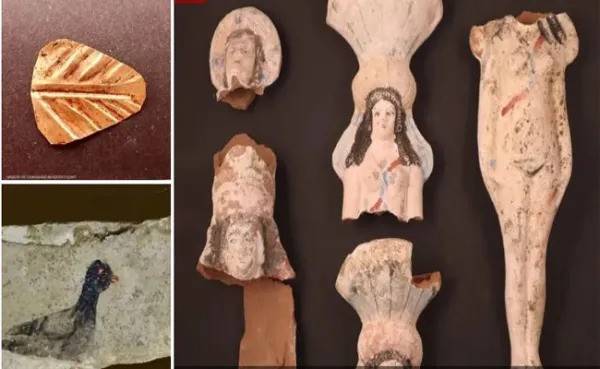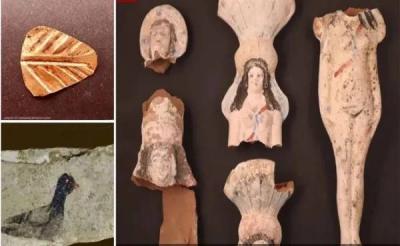Archaeological discoveries in Egypt have continued since the early days of the new year 2024. A few days ago, a Japanese expedition successfully uncovered a tomb in the Saqqara area, and today, Monday, an archaeological mission from the University of Barcelona revealed several tombs dating back to the Ptolemaic and Roman periods, along with a number of mummies from the Roman era, during their excavation efforts in the Bahnasah archaeological area in Minya Governorate.
Dr. Mustafa Waziri, the Secretary-General of the Supreme Council of Antiquities, stated that the Roman-era tombs were found in the eastern part of the Upper Bahnasah necropolis. These tombs exhibit a new burial style consisting of a pit carved into the natural rock underground. For the first time in the Bahnasah area, terracotta statues depicting the goddess Isis Aphrodite, adorned with a floral wreath topped with a crown, were also discovered, indicating that the region still reveals many secrets and burial styles from various eras.
Dr. Adel Akasha, Head of the Central Administration for the Antiquities of Middle Egypt, noted that the mission also found fragments of papyrus within a clay seal, in addition to many mummies wrapped in colorful bandages, some of which had their faces covered with gilded and colorful funerary masks. Inside the mouths of two of these mummies, gold tongues were discovered, a known practice from the Roman period in Bahnasah to preserve the deceased.
Dr. Jamal Al-Samsatawi, General Director of Middle Egypt Antiquities, explained that the architectural design of the tombs at this site is comprised of a stone shaft ending in a door sealed with mud bricks, leading to a large pit where a group of empty coffins were found alongside others containing mummies covered with colored cartonnage. He added that 23 mummified bodies were discovered outside the coffins, and four human-shaped coffins were found, one of which contained two mummies and small votive perfume vials.
Dr. Hassan Amer, an archaeology professor at Cairo University's Faculty of Antiquities and head of the excavation mission, reported that the team also successfully uncovered several stone blocks belonging to a ruined structure, many of which were adorned with plant motifs, clusters of grapes, and groups of animals and birds, such as pigeons and cobras. He indicated that the mission would continue its work at the site in upcoming excavation seasons in an effort to uncover more.




